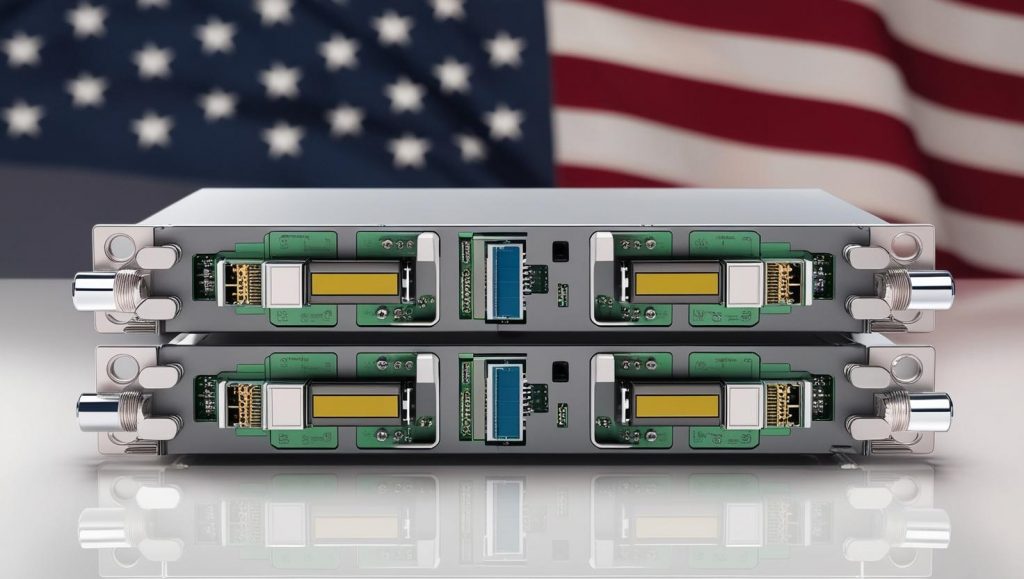The optical transceiver market—critical to enabling high-speed data transfer across fiber optic networks—has experienced substantial evolution in recent years. One of the defining disruptions came from the U.S. administration’s implementation of tariffs on Chinese electronics components during the Trump era. While initially a shock to the global communications hardware supply chain, these tariffs catalyzed significant shifts, opening up new opportunities for innovation, market expansion, and strategic positioning.
Explores the Top 10 Opportunities that have emerged in the optical transceiver market as a result of the post-tariff landscape, providing insights for manufacturers, investors, and policymakers alike.
1. Reshoring and Regional Diversification of Production
Opportunity: Expand manufacturing in tariff-neutral regions Why it matters: Tariffs pushed transceiver companies to rethink their China-centric production models. This led to the relocation of production facilities to countries such as Vietnam, Malaysia, Taiwan, and Mexico. In some cases, production has been reshored to the U.S. and Europe to avoid future trade disruptions.
Example: Companies like II-VI (now Coherent Corp.) and Lumentum began exploring expansions in Southeast Asia and the U.S. to reduce tariff exposure.
2. Growth of U.S.-Based and Non-Chinese Component Suppliers
Opportunity: Strengthen domestic and allied supply chains Why it matters: Tariff-induced uncertainty encouraged OEMs to seek alternative sources for lasers, photodiodes, ICs, and packaging services. This created opportunities for smaller or regional component manufacturers to gain market share.
Trend: Tier-2 and Tier-3 suppliers across North America and Europe have received increased interest and investment from data center and telecom vendors.
Request US Tariff Threat Assessment Analysis Now: https://www.marketsandmarkets.com/pdfdownloadNew.asp?id=161339599

3. Acceleration of In-House Optical Module Design
Opportunity: Vertical integration for better control Why it matters: Hyperscalers like Google, Amazon, and Facebook began developing custom optical transceivers to reduce costs and reliance on third-party suppliers affected by tariffs and geopolitical tensions.
Outcome: A stronger ecosystem of in-house design capabilities and specialized R&D teams for next-gen transceiver technologies.
4. Increased Demand for Tariff-Exempt MEMS and Silicon Photonics
Opportunity: Leverage new technologies to bypass traditional sourcing Why it matters: Silicon photonics and MEMS-based solutions offer high-performance, cost-effective alternatives to traditional transceivers and are more easily manufactured outside of China.
Impact: Startups and incumbents focused on silicon photonics (e.g., Ayar Labs, Intel) gained increased attention for offering scalable, tariff-immune solutions.
5. Expansion of the 400G and 800G Transceiver Market
Opportunity: Meet hyperscaler and telecom needs post-pandemic Why it matters: With accelerated digital transformation, demand for high-bandwidth optical links surged. Tariff-related shifts pushed operators to adopt newer, more efficient transceivers to reduce reliance on older, China-dominated products.
Market Insight: 400G and 800G deployments have grown rapidly, offering lucrative opportunities for innovators in packaging, testing, and design.
6. Enhanced Investment in Testing and Compliance Services
Opportunity: Provide third-party testing and certification in new regions Why it matters: With transceiver production moving out of China, there is a growing need for regionally located compliance, testing, and validation centers—especially for telecom-grade and military-spec modules.
Trend: Testing firms in Europe, India, and North America have seen increased demand as transceivers must meet stricter qualification standards in new supply chains.
7. Diversification of Transceiver Types and Custom Solutions
Opportunity: Cater to niche markets with specialized optical modules Why it matters: Companies disrupted by tariffs are seeking tailored transceivers for specific latency, range, or temperature environments—especially for industrial, defense, and automotive applications.
Result: A growing market for customized optical solutions beyond standard data center deployments.
8. Emergence of New Tier-1 Players and Startup Disruption
Opportunity: Enter market with agile, tariff-optimized models Why it matters: Startups without legacy infrastructure in China are better positioned to operate lean, decentralized manufacturing models. Tariff disruptions have lowered the entry barrier for innovation-focused firms.
Example: New players with flexible supply chains and design capabilities can outmaneuver incumbents tied to fixed production geographies.
9. Government Incentives and Funding for Domestic Optical Networks
Opportunity: Tap into federal and state support for critical infrastructure Why it matters: The U.S. government and allies have begun subsidizing domestic production of network infrastructure, including transceivers, to reduce dependency on foreign (particularly Chinese) sources.
Development: Initiatives like the CHIPS and Science Act have opened doors for federal funding and tax credits for U.S.-based optical component production.
10. Rise of Alternative Sales Channels and Direct-to-Hyperscaler Models
Opportunity: Sell directly to cloud operators and data centers Why it matters: Hyperscale data center operators prefer direct partnerships to reduce costs and improve control over component quality and availability.
Effect: OEMs and ODMs have shifted their business models to provide white-label or co-designed transceivers directly to large-scale buyers, bypassing traditional distribution chains.
While Trump-era tariffs posed an initial challenge for the optical transceiver industry, they have ultimately acted as a powerful catalyst for diversification, innovation, and long-term resilience. By forcing companies to rethink their supply chain dependencies and accelerate technology adoption, the industry has emerged with greater agility and broader opportunities.
From MEMS and silicon photonics to regional production and direct-to-hyperscaler sales, the post-tariff landscape is rich with strategic potential. Companies that move quickly to embrace these opportunities are likely to lead the next wave of growth in the optical communications sector.
